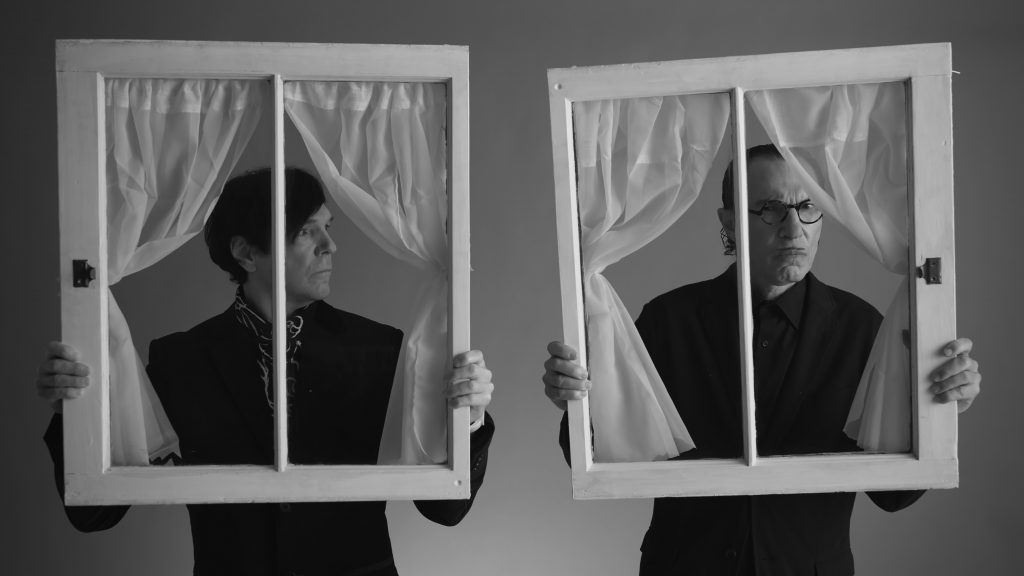April 16, 2022
by Carla Hay

Directed by Robert Eggers
Culture Representation: Taking place in Northern and Eastern Europe, from the years 894 to approximately 919, the fantasy action film “The Northman” features an all-white cast of characters representing the working-class, middle-class and royalty.
Culture Clash: In this Viking version of “Hamlet,” an exiled prince seeks to avenge the murder of his father, who was killed by the father’s brother.
Culture Audience: “The Northman” will appeal primarily to fans of the movie’s all-star cast, filmmaker Robert Eggers and Viking stories that are gory but realistically violent.

Brutally violent but artistically stunning, “The Northman” brings harsh realism and dreamy mythology to this Viking story that inspired William Shakespeare’s “Hamlet.” It cannot be said enough times as a warning: “The Northman” is not for viewers who are easily offended by on-screen depictions of bloody gore and sadistic violence. There are scenes in this movie that can best be described as downright filthy—and not just because these scenes have people covered in dirt, blood and other grime. There’s a filth of the mind that plagues many of the characters in “The Northman,” where murder, rape, torture and other assaults are a way of life to conquer and subjugate others.
American filmmaker Robert Eggers has made a career out of exploring the dark side of humanity in the movies that he writes and directs. His feature films—beginning with 2015’s “The Witch” and 2019’s “The Lighthouse”—have a rare combination of taking place in an otherworldly atmosphere while depicting people and events as if they are historically accurate. “The Witch” and “The Lighthouse” are defined by elements of horror, while “The Northman” (Eggers’ third feature film, which he co-wrote with Sjón) can be defined by elements of tragedy. “The Northman” is also a movie about Vikings, vengeance and violence.
Shakespeare’s “Hamlet” play was itself based on the medieval Scandinavian legend of Amleth, the story of a prince who vows to get deadly revenge for the murder of his father, who was betrayed and killed by the father’s brother. “The Northman” weaves into the story aspects of Scandinavian folklore, the occult and the effects of hallucinogenic drugs. The end result is an immersive cinematic experience that is both menacing and magical.
“The Northman” begins in the year 894, on the fictitious Scottish island kingdom of Hrafnsey, which is close to Orkney Island and Shetland Island. Hrafnsey is ruled by King Aurvandil War-Raven (played by Ethan Hawke), a confident leader who has just returned to the land after about three months away from home. King Aurvandil has a happy family life with his wife Queen Gudrún (played by Nicole Kidman) and their son Amleth (played by Oscar Novak), who’s about 10 or 11 years old when the story begins.
“The Lighthouse” co-star Willem Dafoe has a small role in “The Northman” as a court jester named Heimir the Fool. King Aurvandil is amused by Heimir’s talents, while the king’s jealous younger brother Fjölnir (played by Claes Bang) is dismissive and condescending to Heimir. The scene with the brothers’ two very different reactions to Heimir are meant to show their contrasting personalities and how they interact with people.
King Aurvandil is fixated on the idea that Amleth should be ready to lead Hrafnsey, because the king has a premonition that he will die soon. Aurvandil does not know when he will die, but he is certain of how he will die: “I must die by the sword. I will die in honor,” he says. Gudrún doesn’t like to hear Aurvandil talk this way, and she insists that Amleth is too young to learn about royal adult responsibilities. Nevertheless, Aurvandil and Amleth do a male-bonding ritual around a campfire together, where a shaman leads the father and son to enact various wolf mannerisms while proving that they’re still human.
Although the king is beloved by many of his subjects, there is a cabal of people waiting to betray him. Leading this traitorous group is Fjölnir, who is cruel, power-mad and ruthless. One day, when King Aurvandil and Amleth are spending some father-son time in a forest, Fjölnir and about a dozen of his cronies ambush the king and viciously murder him, while Amleth witnesses everything.
Amleth manages to hide and escape, but not before using a knife to cut off the nose of a brute named Finnr (played by Eldar Skar), who later lies to everyone by saying that he killed Amleth. For the rest of the movie, Finnr is known as Finnr the Nose-Stub. Amleth runs back home, only to find out that Fjölnir and his gang are plundering the land, invading homes, and letting everyone know that the king is dead and Fjölnir is now in charge. One of the last things that a terrified Amleth sees before he runs away from Hrafnsey is his mother being kidnapped by Fjölnir’s cronies.
The movie then fast-forwards about 20 years later. Amleth (played by Alexander Skarsgård) is now a strapping, angry man, who has joined a group of marauding killers hired to help conquer villages in Eastern Europe. Those who are not killed in these villages are held captive as slaves. “The Northman” has several of these invasion scenes that are not for the faint of heart. Amleth has become extremely jaded and callous in all the violence and murders he commits as a berserker warrior.
However, Amleth soon has a vision of a mystic named Seeress (played by Björk), who reminds Amleth that his immediate purpose in life is to avenge his father’s death. This sets Amleth on a path to disguise himself as a slave and go on a slave ship heading to Iceland. It’s on this ship that he meets Olga of the Birch Forest (played by Anya Taylor-Joy, the breakout star of “The Witch”), an enslaved Slavic devotee of the mystic arts. In other words, Olga is a witch. Amleth and Olga have a mutual attraction to each other that goes exactly where you think it’s going to go.
Amleth is going to Iceland, because it’s where Fjölnir has now settled with Amleth’s mother Gudrún, who is now Fjölnir’s wife. Fjölnir and Gudrún have two sons together: brash young adult Thórir the Proud (played by Gustav Lindh) and obedient pre-teen Gunnar (played by Elliot Rose), who have been brought up in a life of royal privilege. For all of his flaws and evil deeds, Fjölnir loves his sons immensely and will do anything to protect them. Considering how Gudrún ended up with Fjölnir, she is treated just like a trophy wife.
“The Northman” often has simplistic and cliché dialogue, but the cast members’ performances are mostly convincing. Skarsgård and Bang have a great deal of physicality in their roles as Amleth and Fjölnir, which play out in the expected “protagonist versus antagonist” ways. What they both bring to these characters is an added level of emotional depth that becomes more compelling when this nephew and uncle, who are sworn enemies, actually have something in common: their love of family as their biggest emotional vulnerability.
Kidman struggles with sticking to the same accent (sometimes she sounds Scottish, Nordic, Icelandic or various combinations of all three), but her overall performance as Gudrún is riveting, because Gudrún is the most complicated character in the story. Taylor-Joy is perfectly cast as the cunning and (literally) bewitching Olga. The rest of the cast members are serviceable in their roles.
Aside from the disturbing violence, “The Northman” will leave an impact on viewers because of how it creates a world caught in between medieval truths and timeless mythology. There are haunting and compelling scenes involving pagan rituals, ascending into heavenly spaces, and transforming someone’s interior body into some kind of mystical realm, with entrails snaking around like winding tree branches. “The Northman” also has more than a few nods to psychedelia, including Olga’s psychedelic mushrooms that are used as a weapon in this family feud.
“The Northman” greatly benefits from the almost-hypnotic cinematography of Jarin Blaschke, a longtime collaborator of Eggers. Whether or not people enjoy Eggers’ movies (which sometimes drag with slow pacing), there’s no denying that these films have top-notch cinematography. Viewers who can withstand the relentless onslaught of violence in “The Northman” can also appreciate that even amid the murder and mayhem, there are still glimmers of hope for humanity.
Focus Features will release “The Northman” in U.S. cinemas on April 22, 2022.


